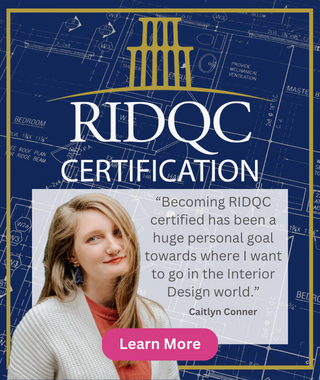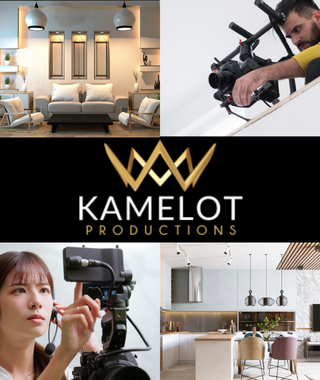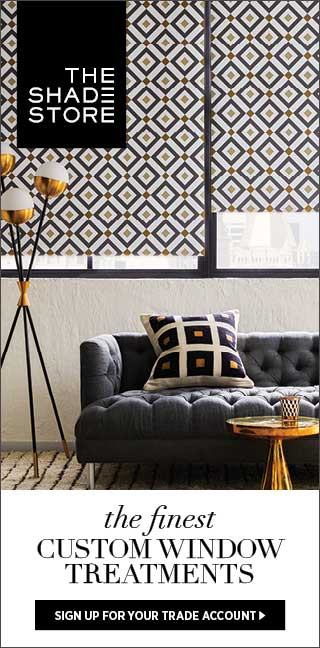DSA Newsletter - July 2009
Notes from Natasha
On Professional Ethics
While
we have all heard these things in the past, it's easy to get caught up
in the hustle and bustle of a busy design business and forget some of
the basics, such as professional ethics and standards. As practicing
designers, we should always behave in a way that is ethical and
professional.
That being said, you will not please everyone all the time. Even
adhering to the most stringent guidelines, you will likely experience
conflict and frustration as well as satisfaction and exhilaration. So be
aware of the major areas of professional ethical concerns that could
impact your relationships with clients, suppliers and other
professionals. A reputation is hard to build and easy to lose so always
keep the following in mind:
- Make full disclosure to your clients,
clarifying the scope and cost of the job. For example, do not tell a
client that you will only charge a small fee, when you intend to sell
furniture retail to a client and make a 50 percent profit.
- Keep the best interests of your clients in
mind at all times, protecting their safety and choosing healthy,
earth-friendly solutions when possible. Comply with all laws, codes and
regulations.
- Do not make changes in quality, quantity or
materials to increase your fee. This temptation is greatest when a
project is over budget. Changing the quality of materials in quoted
proposals or specifying excessively expensive items merely to increase
one's total commission is not good practice.
- Always respect the confidentiality and
privacy of your clients. Do not discuss the budget of your client with
suppliers and contracted third parties.
- Treat your suppliers and other professionals
with honesty and integrity. Never pass the blame on to someone else if
delays or problems are the result of your own errors or lack of
timeliness.
- Always meet your financial obligations. Keep records of all financial dealings.
- Be honest.
Following these guidelines will not only keep your conscious clear,
enabling you to focus on quality design work, but also earn you many
referrals from satisfied clients.
Designer Profile - Brian Watford/Brian Watford Interiors, Atlanta Georgia
In 2006, with a degree in Interior Design from the Art Institute of
Atlanta and over nine years experience as senior designer for Suzanne
Kasler Interiors, Brian Watford established his Atlanta-based design
firm, Brian Watford Interiors. It was during his time as senior designer
for SKI that he cultivated his thorough knowledge of design, ultimately
developing a style and approach to interiors that is his own...fusing
classic, understated, relaxed sophistication with modern sensibility and
quality vintage pieces. With extensive experience in luxurious
residential interiors, Brian is committed to providing impeccable
service and approaching each project as an opportunity to create
something unique.
Brian believes creating luxurious living environments is achieved
through a keen understanding of each client and maintaining the highest
standards of collaboration between all members of the project design
team. The core of Brian Watford Interiors' philosophy is to create an
atmosphere that is appropriate for its architectural surroundings and
encapsulates the client's lifestyle through a process of exposure,
knowledge and creativity. Design intoned to the subtle and the striking.
In October 2005, House Beautiful, named Brian as one of the Top 25
"Next Wave" of Designers (under 40) in America. He also earned much
professional success in his association with Suzanne Kasler Interiors
(with work featured in Southern Accents, House Beautiful, Elle Decor,
Atlanta Magazine Home, Atlanta Homes & Lifestyles and the Atlanta
Journal & Constitution). Brian has received three ASID Georgia
Chapter Design Excellence Gold Awards, including one in 2008 for a
residence under 3500 sq. ft. and another in 2009 for a singular space
and residence over 3500 sq. ft.
Easy to be Green - Recycling Carpet
Many of us think of recycling when we think about being green.
Recycling is one good thing we can do to help reduce waste and encourage
the reuse of materials which in turn minimizes energy use and slows the
depletion of natural raw materials.
As interior designers, carpet is one of the most important products
we can recycle. Did you know that in the United States alone about five
billion pounds of carpet go into landfills each year?
Fortunately, carpet manufacturers have been busy greening their
processes and their products. Many companies have some form of carpet
"take back" program. And the Carpet America Recovery Effort (CARE) is
working hard to make carpet recycling easy and common. Visit
www.carpetrecovery.org for more information.
When
selecting carpet for a project, watch for a take back program that will
take back all the carpet you are removing from a renovation, as well as
being committed to taking back the newly installed carpet at the end of
its useful life. That's relatively easy when specifying commercial
carpet. The challenge is finding recycling for residential carpet, small
quantities of carpet or when you're just removing carpet but not
installing new carpet.
This gap in recycling options is an opportunity for activism. As
designers, we can pressure manufacturers to do more in terms of
recycling services. We can organize community groups or our industry
organizations could sponsor a carpet recycling container for everyone's
use. We can also encourage and lead efforts in our municipalities to
include a carpet container at existing recycling centers. Pooling our
carpet waste would quickly generate truckload after truckload and
significantly reduce that five billion pound figure.
Being a responsible designer is one part of being a responsible
citizen. I just listened to President Barack Obama talk this morning
about the United We Serve initiative. Taking the lead on helping boost
the infrastructure for carpet recycling is one way to serve our planet.
We should all be selecting recyclable carpet and making sure the
carpet we discard is recycled. It's our professional responsibility.
Sue Norman
LEED® AP
Managing Editor
www.easytobegreen.com
Focus on Ceilings
One of the first objects that your mind focuses on as you open your
eyes from a deep sleep every morning is the ceiling. We probably don't
give it any importance nor do our minds even register the vision because
it is usually a boring shade of off white, maybe even a little cracked
and probably very uninteresting . What if our ceilings were a splendid
feast for the eyes, creating our first thoughts of the day as peaceful
ones or maybe gave us some inspiration to climb out of bed most
mornings? In the past century, for the most part, our architects and
home designers have neglected what some have named the "fifth wall" of
the room.
Since we have swung for the past few years into a more minimalistic
phase in design with a huge focus on sustainability, this is a perfect
time to add some interest to the structure and the details of the
ceiling. By looking back at the classic elegance of Florida architect
Addison Mizner's structures and those of the infamous Frank Lloyd
Wright, which were for the most part built during tough economic times,
they never lacked architectural details nor elegance........plus they
had interesting ceilings! With their unique Spanish style, Mizner homes
became the style of Palm Beach society back in the late 1920's.
Adorned with barrel tile roofs and roughly textured stucco walls, his
style was labeled as "Mediterranean revival." Mizner played with
Florida beach and surf to design his structures. He took into account
which rooms would need to be strategically placed to enjoy the view of
the ocean and enjoy sunsets. We have assimilated a lot of Mizner designs
this past decade by utilizing ornamental ironwork and cast stone
architectural elements such as window frames, doorways, arches and
columns. Unfortunately, we have not followed through with the interest
in the ceilings. Mizner created interest in all of the ceilings while
designing. He constructed archways with trusses around the exterior of a
structure, following through to unique groin ceiling vaults at the
entrance of the home.
Mizner strived to present a variety of architectural elements in his
mansions by means of exotic wood beams and trusses, Juliet balconies,
grand doorways and cathedral type ceilings. While Mizner was "wowing"
West Palm and Boca Raton in the 1920's with fabulous estates, Frank
Lloyd Wright was launching a new concept of building poured concrete
textile block homes in California, Arizona and New York. Wright's love
for organic design made him one of the most creative people of our
century. Wright, like Mizner, used the nature of the building site, the
client and the climate to create his structural philosophy.
While constructing homes of every geometrical shape, Wright was able
to create a variety of imaginative ceilings along the way. In his phase
of concrete block homes, which had a sort of "Lego" appeal, he designed
perfect rows of coffered ceiling panels, while giving the home dimension
and balance. Wright also had a gift for finding unique ways to get
natural light to enter the ceilings using two level trays with tiny
rooftop windows, skylights in many sizes and playing with concrete
shapes from the exterior to allow small beams of light to enter.
In the 1930's Wright moved on to exquisite but simple natural stone and
wood construction with sloping ceilings, oblong doorways and
multi-paneled windows. His creativity was endless. Both Mizner and
Wright were masters of architecture and design and refresh our thoughts
of the endless elements that can be used to create a room while not
leaving out that fifth wall - the ceiling. Designers, builders,
architects and home owners should start noticing the ceilings that
surround their space and imagine what Mizner or Wright could have come
up with that would enhance the area without squashing the budget.
Source: ezinearticles.com/?expert+Corinne_Bello
Be a Proactive Designer
There are so many ways to "toot your own horn." Why is it that
designers wait for business to find them? It is true that interior
design is largely based on referrals, but it does not mean that this
should be the sole source of new business. How much more business can
your firm get by being pro-active rather than passive in marketing?
Most people are familiar with the standard methods of submitting
photos and hoping for publication, show houses and
advertising/advertorials. Although these methods work with varying
degrees of results, there are other ways to promote business that are
less tried and just as true. For instance, sponsoring/hosting an
educational event about something related to the industry that informs
consumers is one idea (Feng Shui, how to work with a designer, etc.).
You represent yourself as a practitioner and do the speaking or bring in
other speakers, thus providing a forum to inform and introduce
yourself.
Another group approach is to work with real estate agents. Host a
luncheon for the top brokers in your area and offer them a value add
such as simple design solutions to increase the salability of a property
or an inexpensive "staging" package for homes on the market.
Your goals should be:
- Get yourself in the public eye - let people become familiar with your name
- Speak to value add propositions - working with you will keep design costs down and increase the value of a home/sale.
Remember, they are not hiring you because of pretty design or because
you are the best. You are being hired because there is something in it
for the client. Speak to that point and you will get the job!
Lloyd Princeton
Design Management Company
(212) 777-5718
www.dmcnyc.com
Let's Go To Market!
The High Point Market in High Point, North Carolina provides access to
more home furnishing products than anywhere else in the world. Each
spring and fall, it is attended by over 80,000 industry professionals
from more than 110 foreign countries and all 50 US States. Future market
dates are listed below:
Year
Spring
Fall
2009
October 17-22
2010
April 17-22
October 16-21
2011
April 2-7
October 22-27
2012
April 21-26
October 13-18
2013
April 20-25
October 19-24
2014
March 29-3
October 18-23
2015
April 18-23
October 17-22
For more information on this market, visit http://www.showplace-highpoint.com/market.
Future Las Vegas Market Dates
Fall 2009 Las Vegas Market
September 14 - 17, 2009
Winter 2010 Las Vegas Market
February 1 - 5, 2010
Fall 2010 Las Vegas Market
September 13 - 17, 2010
Winter 2011 Las Vegas Market
February 14 - 18, 2011
Fall 2011 Las Vegas Market
September 12 - 16, 2011
For more information on this market, visit them online at www.lasvegasmarket.com/wmc/market_information/future_dates.







